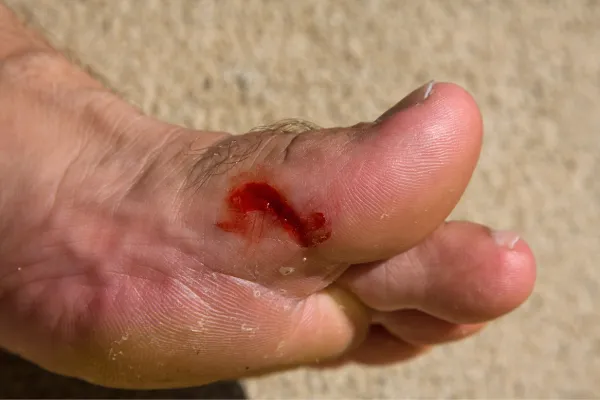
Moist Wound Healing vs. Dry: What Really Works Best?
If you’ve ever had a cut, sore, or ulcer on your foot or leg, you’ve probably wondered: should I keep it dry or moist while it heals?
It’s a great question—and one we get asked all the time in our clinic. For many years, people believed dry healing was the way to go. But the truth is, the science has changed. And what we know now can make a big difference in how fast and how well wounds heal—especially for people with diabetes or circulation problems.
What Is Moist Wound Healing?
Moist wound healing means keeping a wound slightly damp (not wet) using special dressings. These dressings help the wound stay in the perfect environment to repair itself. It’s not just about covering the wound—it's about helping your body do its job faster.
Instead of forming a hard, dry scab, the wound stays moist and protected. This helps new skin cells grow, lowers the chance of infection, and can even reduce pain.
What Happens with Dry Wound Healing?
Dry wound healing is when the wound is left open to air or covered in a basic dressing and allowed to scab over. That scab acts like a natural bandage—but it also slows things down.
Why? Because new skin cells have to work extra hard to grow under that scab, and it’s easy for the wound to crack open again.
Dry healing might work okay for small cuts and scrapes. But when it comes to deeper wounds, ulcers, or slow-healing areas (like what we often see on feet or legs), it just doesn’t hold up as well.
The Science Behind Moist Healing
Moist wound healing has been studied for decades, and the results are clear:
Heals faster: Skin grows more easily in a moist environment.
Less pain: Moisture keeps nerve endings from drying out, which makes the area feel less sore.
Lower risk of infection: Properly sealed dressings protect the wound better than a dry bandage.
Less scarring: Skin heals more smoothly without that thick scab forming.
In fact, studies show that wounds kept in a moist environment can heal up to 50% faster than dry wounds.
When Moist Healing Matters Most
For folks with diabetes, poor circulation, or ongoing wounds like pressure sores or venous leg ulcers, moist healing can make a huge difference. These types of wounds already struggle to heal because blood flow is limited.
Keeping the area moist, clean, and protected gives your body the support it needs to get ahead of infection and avoid complications.
But Isn’t Moisture a Risk for Infection?
Good question. Moist healing doesn’t mean the wound is wet or soggy. It means the area is moist—just enough to help the skin cells grow without letting bacteria in.
This is why the right kind of dressing is so important. At our clinic, we use modern dressings designed to:
Keep moisture in
Keep harmful bacteria out
Make dressing changes easier and less painful
So, the key is controlled moisture—not letting the wound sit in fluid or using a basic bandage that gets soaked.
How Do You Know What’s Best for Your Wound?
This part is simple: if your wound isn’t healing, hurts more than it should, or keeps reopening, it’s time to get help. Some wounds might look small but run deep. Others may be signs of something more serious, like poor circulation or a diabetic ulcer.
We don’t take chances with wounds here. Even a little sore can turn into a big problem if left alone too long.
Our Take? Moist Healing Wins—When Done Right
In our experience treating hundreds of foot and leg wounds, moist wound healing is the gold standard—especially for anyone with a chronic condition or a slow-to-heal sore. But it’s not one-size-fits-all. The type of wound, your health history, and the dressing used all play a role.
If you're not sure what to do, don’t guess. That’s what we're here for.
Need Help with a Hard-to-Heal Wound?
At American Surgeons Group, we take wound care seriously. Whether it's a foot ulcer, a pressure sore, or a leg wound that just won’t go away, we’re here to help you heal faster—with less pain and fewer complications.
Your feet carry you through life. Let’s take care of them together.
